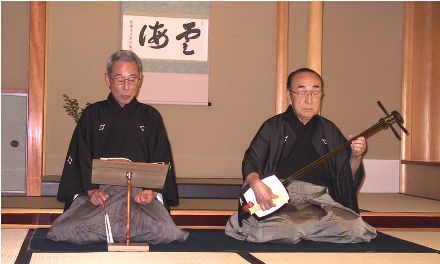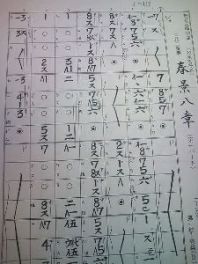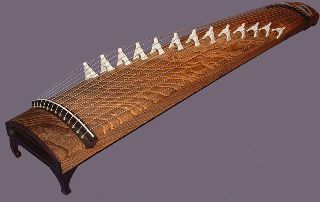Music
Image by: © Olivia Braddock
Modern Japanese music includes a range of different music styles both traditional and modern. Whilst more western styles of music are popular amongst the younger generation, the interest in traditional and folk music still remains.
Traditional Music
The oldest forms of traditional Japanese music are shomyo (声明 or 聲明) which is a form of Buddhist chanting, and gagaku (雅楽), orchestral court music. Both types of music are rarely available in mainstream Japanese music and are mainly enjoyed by the older generations.Musical theatre also developed in Japan from an early age and can still be enjoyed in certain theatres by tourists and those interested. Noh theatre (能) is the most prominent form of traditional Japanese music theatre which arose around the 14th century and is still performed today. All of the actors are male, playing both male and female roles, and most are masked.
Modern Music
Following the introduction of Western music during the Meiji restoration, it became increasingly popular in Japan. During the late 1900s, political leaders would hire singers to sell copies of songs that contained a message similar to their own. These performers were known as enka-shi. This form of music was very popular pre WWII but was soon shadowed by the arrival of jazz.Apart from during WWII (jazz was seen as music of the enemy), jazz became incredibly popular and is still a part of the Japanese music scene.
Post WWII saw the revival of enka, with people like Shinichi Mori and Keiko Fuji pioneering the way for the enka genre. However, the enka genre began to diminish during the 1990s, falling to Western style J-pop. It wasn’t until the late 2000s that enka has seen yet another rise in popularity. Artists like Hikawa Kiyoshi ‘the prince of enka’ have helped to bring the enka genre forward. Enka has also gained popularity internationally, 2008 seeing the arrival of Jero the first black enka singer in Japan.
Japanese rock
J-rock has its roots in 1960s artists such as The Beatles, The Rolling Stones and Bob Dylan. J-rock initially started off as a mere imitation of Western rock music, but eventually began to branch off into several sub-genres. Each genre contains sounds and styles distinctive to that genre, each genre being very much Japanese.The 1990s saw the arrival of ‘visual kei’, a type of rock music containing dark themes, focusing on the aesthetics of the artist (hence the name ‘visual kei’). Visual kei artists tend to wear heavy make up and elaborate clothing, many going for an androgynous look. Some of the pioneers of visual kei include, Dir en Grey, Luna Sea, Malice Mizer, Gackt (ex Malice Mizer) and X Japan. Although Visual Kei started off as a rather underground genre, it has become more popular internationally over the last few years with bands such as The GazettE, Girugamesh, Miyavi and Gackt touring the world.
Japanese pop
J-pop is the most mainstream genre of music, hitting Japan during the 1990s. J-pop has evolved, becoming more of a life style rather than a genre of music. Companies such as Avex and Johnny’s associates have been pumping out bands and artists who have become ‘idols’, Artists such as Arashi, KAT-TUN, Utada Hikaru, Ayumi Hamasaki and NewS etc lead the way, topping the Oricon charts.The incorporation of J-pop in anime and games has increased popularity internationally with artists from the Korean music industry crossing over into Japan, creating a fan base within South East Asia as well as the Western world.
Despite its small size, Japan has the second largest music industry (following the US), its music and media spilling over the border spreading internationally. It’s only a matter of time before Japan takes over from the US in terms of music and film.
Some traditional Japanese musical instruments
Koto (琴(こと))
The koto is a 13 stringed instrument each string with its own bridge. It is typically made of Paulownia wood and varies from being very plain to being highly decorated. Three finger picks (on thumb, index finger, and middle finger) are used to pluck the strings. In addition to being played as a solo instrument or in a small group there are koto orchestras. Players are either seated or, in traditional style kneeling, beside the instrument. The five note scale that the koto uses has become an influence in jazz, and the sound of the koto is being heard in western pop and rock music.
(Image by: S.M.Gregory Under Creative Commons Licence)
Shakuhachi (尺八(しゃくはち))
The Shakuhachi is a wind instrument traditionally made from a single piece of bamboo. It has a sound similar to a flute and dates back to about 700 AD. It is played by blowing across the top and is often tuned to a minor scale giving its typically melancholic sound. As well as its place in traditional Japanese music the sound had become popular in western pop and rock culture since a synthesized version became available.

(Image by: Lombroso Under Creative Commons Licence)
Shamisen (三味線(しゃみせん))
The shamisen is a 3-stringed instrument (literally – three flavour strings) plucked with a triangular plectrum called a bachi. The body is small with a long neck leading to large tuning pegs. The instrument is found all over Japan with many local variations and is used to play music in many different genres. It is now starting to be used in some popular Western music to provide a contrasting style.
The lowest string runs over a small hump at the bottom end of the instrument. This creates a vibration or ‘buzz’ that runs under the music.
Traditionally the music is written down from right to left. Each genre has its own way of writing and a player who has learnt to play one genre may find it difficult to play another due to the variations in which the music is written down.
 |
 |
Shamisen player accompanying a singer.((Image by: Dan Smith Under Creative Commons Licence)) |
Traditional shamisen music (((Image by: Koje Joe Under Creative Commons Licence)) |

